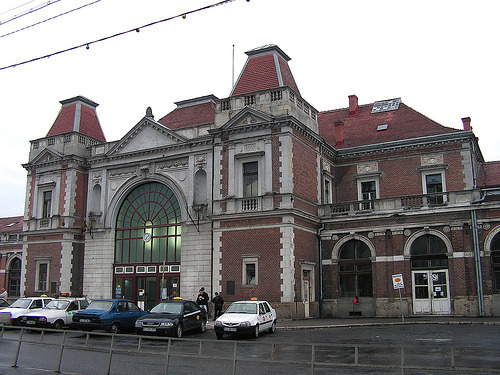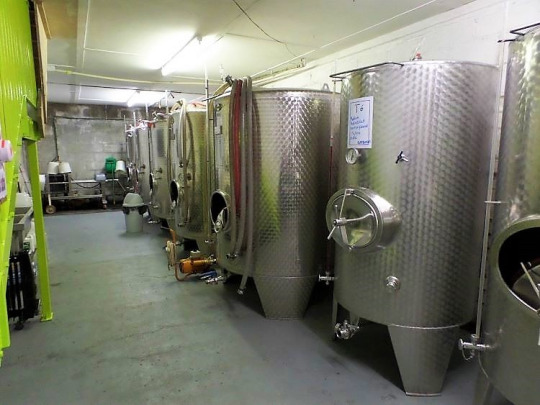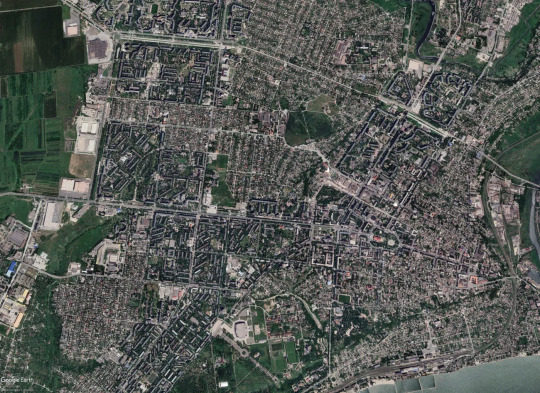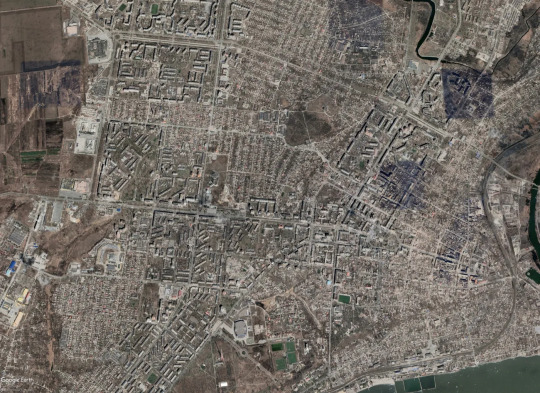#Eastern Railway 2023
Text
RRC, Eastern Railway Recruitment 2023
RRC, Eastern Railway Recruitment 2023 : आरआरसी ईस्टर्न रेलवे भर्ती 2023 का विज्ञापन 3115 पदो के लिये जारी किया है वे उम्मीदवार जो रिक्ति विवरण में रुचि रखते हैं और सभी पात्रता मानदंड पूरे करते हैं, वे अधिसूचना पढ़ सकते हैं और ऑनलाइन आवेदन कर सकते हैं।
RRC, Eastern Railway Recruitment Overview:-
Organization
Eastern Railway
Post
Railway Recruitment Cell
Vacancy
3115
Salary/Pay Scale
Varies…

View On WordPress
#12th Pass Job#Eastern Railway 2023#Eastern Railway Vacancy Details#India Job#Latest Job#Latest Update#New Jobs#RRC#RRC Eastern Railway 2023#RRC Eastern Railway Application Fee#RRC Eastern Railway Recruitment 2023#Sarkari Job 2023
0 notes
Text
Railway RRC-NER Recruitment 2023 : रेलवे (डीजल शेड) में निकली विभिन्न पदों पर बंपर भर्ती, 10वीं पास करें आवेदन
उत्तर पूर्वी रेलवे गोरखपुर भर्ती 2023 (Railway RRC-NER Recruitment 2023)
Railway RRC-NER Recruitment 2023 : उत्तर पूर्वी रेलवे गोरखपुर (North Eastern Railway Gorakhpur) ने अपरेंटिस (Apprentice) पदों की पूर्ति के लिए 1104 पदों पर भर्ती निकाली हैं। इक्छुक उम्मीदवार दिनांक 25/11/2023 से दिनांक 24/12/2023 तक नीचे दी गई लिंक के माध्यम से ऑनलाइन आवेदन कर सकते है।
इस भर्ती से संबंधित जानकारी जैसे –…

View On WordPress
#North Eastern Railway Gorakhpur#Railway Apprentice Vacancy 2023#Railway Diesel Shed Bharti 2023#Railway Recruitment Cell (RRC)#Railway RRC-NER Recruitment 2023#उत्तर पूर्वी रेलवे गोरखपुर भर्ती 2023
0 notes
Text

Books I read in 2023
Binario Est - Marco Carlone (2022)
#binario est#marco carlone#my cousin gave it to me for christmas#because apparently i am now that person who you give railway related things to XD#not that i'm complaining!#each chapter is about a different remote rail line in different countries in eastern europe#the author is an italian journalist and though he clearly knows and loves these countries#sometimes it felt a little patronizing or dismissive#but all in all a good read#books i read in 2023#i just want a tag for the things i personally put out into the world
0 notes
Text
South Eastern Railway Bharti 2023: रेलवे में 10वीं पास के लिए 1805 पदों पर बिना परीक्षा भर्ती, ऐसे करें आवेदन
South Eastern Railway Bharti 2023: रेलवे में 10वीं पास के लिए 1805 पदों पर बिना परीक्षा भर्ती, ऐसे करें आवेदन
South Eastern Railway Bharti 2023 : आपका हमारे हिंदी ब्लॉग http://www.dailysarkariupdate.com पर स्वागत हैं, जो उम्मीदवार South Eastern Railway में अप्रेंटिस के रूप में अपना करियर बनाना चाहते हैं, तो अब आप अपना करियर बना सकते हैं, भारत सरकार आपके लिए एक सुनेहरा मौका लेकर आई हैं आप भी अप्रेंटिस बन सकते हैं, आपको इस आर्टिकल में South Eastern Railway Recruitment 2023 बारे में छोटी से छोटी जानकारी…

View On WordPress
#(jobs#10वीं#1805#2023#bharti#eastern#latest#railway#south#आवेदन#ऐसे#करें#के#पदों#पर#परीक्षा#पास#बिना#भर्ती#में#रेलवे#लिए
0 notes
Photo






On 24th February 1923, the world famous steam train, the Flying Scotsman, went into service.
The first train to officially reach speeds of 100 mph and more, the Flying Scotsman is 100 years old today.
The Flying Scotsman is arguably the most famous locomotive in the world. Originally built in Doncaster and started life on the London and North Eastern Railway in 1923. It was named the Flying Scotsman after the London to Edinburgh service which started daily at 10am.
Designed by Sir Nigel Gresley, it was the first steam train to ever reach speeds of 100mph. In 1928, it was redesigned with a new type of corridor which meant a new crew could take over without the train stopping - reducing journey times from London to Edinburgh by eight hours.
The locomotive starred in The Flying Scotsman feature film released in March 1930, one of Britain’s first films with a ‘talkie’ soundtrack.
When it was first built, the Flying Scotsman was apple green, but it was repainted black during the war, in common with all railway stock. It was later blue when the railways were nationalised until it went out of service in 1963.
The locomotive was bought and repaired by British businessman William McAlpine in the Eighties and went on a tour of Australia, clocking up 422 miles - the longest ever non-stop run by a steam locomotive. In the 90s, the Flying Scotsman was once part-owned by record producer Pete Waterman.
After a successful campaign, the locomotive was once more returned to public ownership in 2004. In its latest form, it is back to its classic green and is officially known as No. 60103.
The Flying Scotsman 2023 day trips will set off from Bristol, London and York, and will travel the country to eight destinations including Edinburgh, Portsmouth and Cardiff. More dates will be announced at a later date.
121 notes
·
View notes
Text
If you want to know why Russia has stepped up its aggression in recent weeks in eastern Ukraine, look to the increasing pressure which Ukraine has put on Russian occupiers in occupied Crimea.
Russia has been taking it on the chin in Crimea, so it is using the classic tactic of trying to relieve pressure there by attacking elsewhere.
Ukraine is making it increasingly difficult for Russia to hang on to illegally annexed Crimea thanks to an ongoing campaign that's targeting air defenses, rail links and water connections.
The latest blows were struck on Friday, when a joint Ukrainian navy and army operation hit a ferry crossing and oil terminal at the port of Kavkaz, located on the Russian side of the Kerch Strait that divides Crimea from Russia, Ukraine’s general staff said in a statement.
Hours earlier, Ukrainians hit the Crimean side of the Kerch ferry crossing — damaging two rail ferries, the Avanguard and the Conro Trader, that are crucial to Russia's ability to keep Crimea supplied.
The Kerch Strait Bridge has been significantly damaged after a series of Ukrainian attacks in 2022 and 2023, leaving it unable to take heavy train traffic. That means Russia cannot use it for military logistics like transporting heavy armored vehicles, Ukrainian navy spokesperson Dmytro Pletenchuk told POLITICO.
That is forcing Russia to rely on road and rail links across occupied Ukraine — which puts trains and trucks into easier range of Ukrainian attack.
“Considering the fact that the railway line Russians are building through the occupied territories of Ukraine is not finished yet, this civil ferry was their army’s main logistics route,” Pletenchuk said. “Their sea logistics is also long gone after Ukraine destroyed four and damaged five of their landing ships,” he added.
The return of Crimea, seized illegally by Putin in 2014, is one of the highest military priorities of Ukraine.
Making it difficult for Russia to re-supply its occupiers in Crimea has been part of an ongoing effort by Ukraine almost since the start of the war – 829 days ago.
More reading on Ukraine's success in Crimea...
The Economist: Ukraine gradually gains upper hand in Crimea battle
In case you have use for it, this is "Crimea is Ukraine" in Ukrainian...
Крим це Україна!
#invasion of ukraine#crimea#ukraine aid now#russia's war of aggression#kerch bridge#russia is losing the war#vladimir putin#russia is a terrorist state#владимир путин#путин хуйло#добей путина#путлер#путин – это лжедмитрий iv а не пётр великий#путина в гаагу!#россия - террористическая страна#агрессивная война россии#руки прочь от украины!#геть з україни#вторгнення оркостану в україну#крим це україна!#деокупація#слава україні!#героям слава!
7 notes
·
View notes
Text
May 3, Bistrita - Dracula 2023
The train left Munich at 8:35 pm on May 1st, arriving in Vienna early the next morning.
We would have been there sooner, but the train was an hour late. Really unfortunate, because once I arrived from Vienna to Budapest, the place is beautiful. The fact that the railways wanted to get back on schedule meant that didn’t get much of a chance to explore, but I managed to get a few pictures.

Train station interior: Photo by Thomas Choi on Unsplash (https://unsplash.com/photos/DdBEYd4hZ5k)

Train station exterior: Photo by Gabriel Miklós on Unsplash (https://unsplash.com/photos/asIEq0NrNNE)

Budapest: Photo by Klaudia Olejnik from Pixabay (https://pixabay.com/photos/budapest-hungary-river-city-bridge-7810815/)
You can feel the history, moving into the area that the Ottoman Empire once ruled. The influences are so different, between the oldest architecture in England and here. Like a gateway into Eastern Europe, something like that. I would love too travel here some time when I’m not on business with Mina. She could probably tell me the history of half the buildings here.
Sadly, I left shortly after I took the picture of the bridge. I almost ran late for the train taking off again! I can’t complain, though, as we left in good time and weren’t too late getting into Cluj-Napoca. Even the rail station was lovely.

Train station: Public Domain image at Wikipedia.com (https://en.wikipedia.org/wiki/Cluj-Napoca_railway_station)
I stayed for the night at a small hotel about ten minutes walk from the station, Villa Escala. I always thought that if you’re going to travel, you should go places where you can absorb the atmosphere more, and this place was lovely in that regard. The atmosphere warmed the soul, and the furniture wore its history on its sleeve without looking worn out.

Hotel (Villa Escala): Photo at Booking.com (https://www.booking.com/hotel/ro/villa-escala.html)
Once I checked in, I inquired after the staff where I might find some local fare, and they directed me to a nearby restaurant where I had a lovely dish they called “ paprikás csirke”, chicken paprikash. While apparently not commonly made this way these days, this particular place used an old recipe that included hot paprika, and it was quite a thirsty dish. I finished my carafe and water and needed more. It was interesting in how the burn was more at the back of the mouth and going down than at the front.
Mina: I think you would love this dish. Creamy, spicy, a little tart from the sour cream, and a subtle sweetness. I found a recipe for it you might want to try. (link)

Chicken Paprikash (paprikás csirke): Photo by Istvan Szabo at Pexels (https://www.pexels.com/photo/a-close-up-shot-of-a-chicken-paprikash-dish-10338434/)
While the cell reception has grown increasingly spotty during my trip, I’ve done some research on the area as I went. The place I’m going is right on the border of Transilvania, Bucovina, and Moldova (that’s the Romanian state, not the country – that’s farther east yet), in the eastern half of the country, tucked up in the Carpathian Mountains. I won’t be quite heading into the latter two states, I gather. I think the castle must not be on any official roads, because I couldn’t find where it’s supposed to be on any roads. I think I can see an impression on Google Earth, but it’s surprisingly blurry. I can’t tell if what I’m seeing is a castle or a strange craggy outcropping. I suppose I’ll see.
Anyway, there are a few different ethnic groups in the area: Saxons (yes, the same ones King Arthur was supposed to have fought – they occupied a really wide swath of Europe), Vlachs (speakers of Eastern Romance languages, possibly descended from the Romans who once occupied the region; indeed, they simply called themselves Romans), Magyars (Hungarians), and Szekelys (who regard themselves as descendants of Huns, and served as the vanguard of Romanian armies in the past). Supposedly, when the Magyas conquered the Carpathian Basin, they found the Huns already there, so it’s possible.
Supposedly the Carpathian Mountains are rich in folklore and stories of all sorts of strange beings out there in the night. I think I must have been thinking about it that night, because my sleep was interrupted by odd dreams. It likely wasn’t helped by a dog howling beneath my window, the paprika, or the picturesque, if rather spooky, graveyard I had to pass between the hotel, train station, and restaurant. Despite that, I must have been sleeping very deeply by morning – it took a couple of wake up calls for me to actually get up.
I had a breakfast of more paprika, a polenta-ish cornmeal porridge called “mămăligă”, and a stuffed eggplant dish they called “impletata”… but since that word just means “stuffed” according the the online translator that has been a lifeline this leg of the trip, I think they might have been having me on a little. Very tasty, though, so I can’t complain too much.
I hurried through the food to get to the train on time, since it was supposed to leave before late, but… Well, the phrase “hurry up and wait” comes to mind. We didn’t get started until at least 8:30. Such is life.
The train took a moderate pace through the countryside, which suited me just fine. I mentioned that Budapest was beautiful, but the countryside of Transilvania has a completely different sort of beauty. Little picturesque towns in the midst of rolling fields and little rivers in the distance, castles settled atop steep hills, watching over the surrounding area like lone sentinels. The streams and rivers had wide, stony margins that made me wonder if they were prone to sudden floods. Every once in a while, we would pass a small village and town close and see people going about their daily lives that made me think of some of those cottage/back to nature sort of aesthetics you see online. It reminds me of a cottagecore mood board Lucy once showed me when we visited, and traveling through this region, I can feel the appeal.

Romanian Countryside: Photo by Fotografu on Unsplash (https://unsplash.com/photos/8h-yUi_l2Jw)
I arrived in Bistrita iwhile it was still somewhat bright, sadly too late to do much in the way of sightseeing, though a little bit of hurry let me take a photo of the church that dominates the central square of the town.

Bistrița Evangelical Church: Photo by Mian Bulacu (https://backpackglobetrotter.com/2018/09/17/postcards-romania/)
The Count directly me to The Coronana de Aur hotel. It’s a modern business hotel like many others, but it’s hard to find a hotel that’s historic these days. While it’s a little disappointing, as I was hoping to take in a little more of the local feel, it was nice to have a comfortable place to stay before I head off to the Tihuta Pass tomorrow. Having good reception to call Mina before I go is a comfort, too.
When I arrived, the front desk staff passed me a letter from the Count: “My Friend.--Welcome to the Carpathians. I am anxiously expecting you. Sleep well to-night. At three tomorrow a bus will start for Bucovina; a place on it is kept for you. At the Tihuta Pass my carriage will await you and will bring you to me. I trust that your journey from London has been a happy one, and that you will enjoy your stay in my beautiful land.
Your friend,
DRACULA.”
(A/N: Hopefully you enjoyed the first foray into this silly endeavor to rewrite the book as if it was happening as of May 3, 2023. This is absolutely not meant to be serious.
I am trying to make it a little more accurate to real world Romania as much as I can (and as much as can be reasonable from an Englishman's perspective). We're part of a connected, small world these days. I think that's going to make the horror of the isolation even stronger.
Anyway. Have fun with the dumb, silly thing I'm making at DD goes. If it's not your cup of tea, you are welcome to move on.
Obviously, this is not mine, Dracula being public domain in the US aside. It's basically fanfic. Some of it will be direct quotes. Probably not much, as having characters in a modern context will change them, and that'll be filtered through my own lens of how I perceive them as well.
Enough excuses, I suppose. It'll be what it'll be.)
#dracula daily#dracula#modern rewrite#everything that's happened now is happening now#just for fun#I stayed up way too late writing this#dracula 2023
28 notes
·
View notes
Text
Daily Wrap Up April 27-May 1, 2023
(Unplanned long weekend break due to inconvenient minor injury. Oops.)
Under the cut:
A Russian mass missile attack against Ukraine killed 25 people, including five children, on April 28, according to the Ukrainian authorities. The Russian overnight attack that hit a nine-story residential building in the city of Uman, Cherkasy Oblast, killed 23 people, including four children, as of 7 p.m., the Interior Ministry reported. (These numbers may continue to change.)
A fire at a fuel storage facility in the Crimean port city of Sevastopol, caused by an apparent drone strike, has been extinguished, the Moscow-installed governor has said. Video footage posted on social media earlier on Saturday showed a large waterside area on fire, with a column of black smoke rising from the burning fuel. Other images showed a huge pall of smoke hanging over the area. More than a dozen fuel tanks are situated at the site in Kozacha Bay.
Ukraine’s army stopped 20 attacks by the Russian army in the Bakhmut, Avdiivka and Marinka on Sunday.
Russian missile strikes have injured 34 civilians and apparently damaged railway infrastructure and an ammunition depot in south-eastern Ukraine, hours before an explosion inside Russia derailed a freight train. The attacks on both sides of the border on Monday apparently aimed to disrupt military logistics before a significant Ukrainian counteroffensive against occupying Russian troops, expected to start shortly in the south or the east.
The Ukrainian military says it is locked in a “positional struggle” as fierce fighting continues to rage in Bakhmut, adding it has been able to push back Russian forces after a series of counterattacks.
Four civilians died as a result of Ukrainian shelling on a village just over the border in Russia's Bryansk region on Saturday evening, a local governor said.
A Russian mass missile attack against Ukraine killed 25 people, including five children, on April 28, according to the Ukrainian authorities.
The Russian overnight attack that hit a nine-story residential building in the city of Uman, Cherkasy Oblast, killed 23 people, including four children, as of 7 p.m., the Interior Ministry reported.
The National Police earlier said that at least 18 people had been injured in Uman, nine of whom had been hospitalized.
The number of casualties may grow as the rescue operation continues at the destroyed building.
The attack partially destroyed three upper floors of the apartment building, causing large fires, according to first responders.
Other missiles Russia launched on April 28 targeted Dnipropetrovsk and Kyiv oblasts.
A young woman and a two-year-old child were killed, and four other civilians were injured in the city of Dnipro, according to the regional authorities.
Kyiv Oblast Governor Ruslan Kravchenko said that a high-rise building in Ukrainka, some 50 kilometers south of Kyiv, was damaged by the missile debris.
Two people were injured, including a 13-year-old child who was hospitalized in a Kyiv hospital, according to the Interior Ministry.
Ukraine's air defense shot down 21 of the 23 X-101 and X-55 cruise missiles, as well as two drones, that Russia had launched using strategic Tu-95 aircraft from the Caspian Sea, according to Ukraine's Air Force.
Ukraine’s power grid operator Ukrenergo said the missile attack had not damaged the country's energy infrastructure.
The deliberate killing of civilians at any time and in any place breaches the Geneva Conventions and constitutes a war crime.
Dmytro Kuleba, Ukraine’s foreign minister, has argued that the April 28 mass missile attack is another proof Ukraine needs to be supplied with American-made F-16 fighter jets.
Ukraine has been asking to receive F-16 warplanes to protect its airspace from Russian attacks and strengthen its upcoming counteroffensive. Yet, many allies, most notably the U.S. and Germany, have not backed the idea.
-via Kyiv Independent
~
A fire at a fuel storage facility in the Crimean port city of Sevastopol, caused by an apparent drone strike, has been extinguished, the Moscow-installed governor has said. .
Video footage posted on social media earlier on Saturday showed a large waterside area on fire, with a column of black smoke rising from the burning fuel. Other images showed a huge pall of smoke hanging over the area. More than a dozen fuel tanks are situated at the site in Kozacha Bay.
The strike, reportedly by a “kamikaze” drone, came a day after a wave of missile attacks on Ukrainian cities killed 26 people, including many in an apartment block in Uman in the Cherkasy region.
After the drone strike at 4.30am, a firefighting train was reportedly brought in to try to extinguish the blaze.
“According to preliminary information, the fire was caused by a drone hit,” the city’s Russia-installed governor, Mikhail Razvozhayev, wrote on Telegram.
“The situation is under the control of our firefighters and all operative services,” he said. “Since the volume of fuel is large, it will take time to localise the fire.”
Razvozhayev said the fire was assigned the highest ranking – level four – in terms of how complicated it would be to extinguish. He said it had not caused any casualties and would not hinder fuel supplies in Sevastopol.
Razvozhayev reported earlier this week that the Russian military had destroyed a Ukrainian sea drone that attempted to attack the harbour, and another one had blown up, shattering windows in several apartment buildings but not inflicting any other damage.
Sevastopol has been a regular target of drone attacks, especially in recent weeks. The city, on the Crimean peninsula that Russia annexed from Ukraine in 2014, has come under repeated air attacks since Russia’s invasion of its neighbour in February last year.
Russian officials have blamed the attacks on Ukraine. The Ukrainian military did not immediately respond to a request for comment on Saturday. Kyiv almost never publicly claims responsibility for attacks inside Russia or on Russian-controlled territory in Ukraine.
Russia’s missile strikes on Friday killed 26 people, including five children, as Kyiv said preparations for a counteroffensive against Moscow’s forces were nearly complete.
The most serious casualties were caused by a strike on a residential block in Uman that killed 23 people.
Rescue workers in Uman, the site of an annual Hasidic Jewish pilgrimage, pulled the body of another child from under the rubble on Friday evening. Authorities said four children in the city had been killed by the cruise missile strikes.
Earlier in the day, Dmitry, a 33-year-old resident from Luhansk, an eastern city under Russian control, was looking for his children. “I want to see my children. They are under the rubble,” he said.
Rescuers were using cranes to search for survivors among the remains of the multi-storey housing block in the city of 80,000 inhabitants.
“I’ve seen a lot, but I haven’t lost my children before. Now I want to see my children, alive or dead,” Dmitry said.
-via The Guardian
~
Ukraine’s army stopped 20 attacks by the Russian army in the Bakhmut, Avdiivka and Marinka on Sunday.
The General Staff of the Armed Forces of Ukraine reported it in its daily evening update published on Facebook.
“The Russian Federation continues to use terror tactics. Today, the enemy launched two missile strikes on the cities of Kramatorsk and Kostiantynivka. Also, throughout the day, it launched 15 air strikes and mounted about 30 attacks using multiple launch rocket systems on the positions of our troops and settlements,” the update said.
“The threat of missile and airstrikes remains high across Ukraine.
“The enemy continues to focus its main efforts on offensive operations on Bakhmut, Avdiivka and Marinka. During the past day, Ukrainian Defense Forces repelled more than 20 enemy attacks on the specified axes. Bakhmut and Mar’inka remain places of fierce fights.”
-via The Guardian
~
Russian missile strikes have injured 34 civilians and apparently damaged railway infrastructure and an ammunition depot in south-eastern Ukraine, hours before an explosion inside Russia derailed a freight train.
The attacks on both sides of the border on Monday apparently aimed to disrupt military logistics before a significant Ukrainian counteroffensive against occupying Russian troops, expected to start shortly in the south or the east.
The Russian strike in the Ukrainian city of Pavlohrad was part of the second wave of missile attacks in just three days; on Friday, 23 people were killed when a missile hit an apartment block in central Uman city, and a woman and her daughter died in Dnipro.
With Kyiv’s allies saying that equipment and newly trained troops promised for the next Ukrainian campaign are in place, Moscow has revived its winter tactics of attempting to orchestrate bombing campaigns far behind Ukrainian frontlines.
It launched 18 cruise missiles in the early hours of Monday morning, although 15 were intercepted by air defences, including the ones aimed at Kyiv. Support from western allies has helped Ukraine improve protection for its cities and the main military sites.
At Pavlohrad, video posted on social media showed a missile strike had caused a significant blaze and secondary detonations.
Among the buildings damaged or destroyed were an industrial zone, 19 apartment buildings and 25 homes, according to Mykola Lukashuk, the head of the Dnipro regional council. Two women were seriously injured.
Russian officials and the Tass state news agency claimed Moscow had hit an ammunition depot and railway infrastructure, hampering military preparations.
“The objectives of the strike were achieved,” the defence ministry said in a statement. “The work of enterprises making ammunition, weapons and military equipment for Ukrainian troops has been disrupted.”
Ukrainian sources said one location hit was a plant that produced solid fuel for Soviet-era rocket motors and had a number of expired solid fuel motors awaiting decommissioning, although that claim could not be immediately verified.
The size of the fire in Pavlohrad suggests Russia may have hit an important arms depot, and the incident comes after Ukraine’s recent attack on an oil storage facility in Sevastopol, Crimea.
“Around 2.30am, the Russian invaders attacked Ukraine from strategic aviation planes,” said a post on the Telegram channel of Valerii Zaluzhnyi, the commander in chief of Ukraine’s armed forces.
Air defence systems were called into action to shield the Kyiv region from Russian missiles, officials said. Ukrainian media reported blasts in the Dnipropetrovsk and Sumy regions.
Senior Ukrainian officials have suggested in recent days that the counteroffensive may be imminent. It will be a critical test of whether Russia can be dislodged from land it seized in 2014 and last year – nearly one-fifth of Ukrainian territory.
“If in a global sense, in a high-percentage mode, we are ready,” Ukraine’s defence minister, Oleksii Reznikov, said during a press conference in Kyiv on Friday. “Then the question [about when to launch] is for the general staff, for the command. As soon as there is God’s will, the weather, and the decision of the commanders – we will do it.”
On Monday an explosion in the Russian region of Bryansk, which borders Ukraine, derailed a freight train, the local governor said in a social media post.
“An unidentified explosive device went off, as a result of which a locomotive of a freight train derailed,” Alexander Bogomaz said on Telegram, adding that there were no casualties reported.
Local authorities said the train was transporting fuel and building materials. Images shared on social media showed several tank carriages laying on their side and smoke rising into the air.
It was not immediately clear who was responsible for the attack, which happened less than 40 miles from the border with Ukraine.
There has been an increase in rail incidents in Russia in the 14 months since Vladimir Putin ordered the full-scale invasion of Ukraine. The authorities in Russia have arrested at least 66 Russians on suspicion of railway sabotage since last autumn, according to the independent Russian website Mediazona.
Separately, the governor of Russia’s Leningrad region near St Petersburg said a power line had been blown up overnight and an explosive device found near a second line.
-via The Guardian
~
The Ukrainian military says it is locked in a “positional struggle” as fierce fighting continues to rage in Bakhmut, adding it has been able to push back Russian forces after a series of counterattacks.
“I can definitely confirm the information that the enemy in Bakhmut left some positions after some of our counterattacks,” Serhii Cherevatyi, the spokesperson for the Eastern Grouping of the Ukrainian Armed Forces, told a national broadcaster.
“There is a positional struggle there,” Cherevatyi said, explaining that the frontline was constantly shifting. “Sometimes the enemy has some success after a powerful artillery strike and the destruction of infrastructure, and they can move forward. But we counterattack and often win back our positions after inflicting fire on the enemy.”
Cherevatyi added that for all its efforts, Russia still had not been able to “completely” capture Bakhmut.
The spokesperson went on to say that although the Russian military’s airborne units had reinforced positions in Bakhmut, Wagner forces continued to be the ones carrying out the assaults.
“However, due to heavy losses, they have been reinforced by airborne units. In addition, in an effort to capture Bakhmut completely, we also note that the enemy is also using snipers from special units and even special services (counterterrorism, for instance) to hit our positions as much as possible," he said.
Cherevatyi said Russian forces were having to be more mindful of their use of artillery shells and rockets, but rejected claims by Wagner founder and financier Yevgeny Prigozhin that his fighters were being starved of ammunition.
“They have been given a general norm of shells, just like other units of the aggressor,” he said. “Over the past 24 hours, the enemy has fired 304 times at the Lyman-Kupiansk direction with various artillery systems. However, of course, if we take the summer of 2022, they could use an unlimited amount of ammunition along the entire front line non-stop. Now they no longer have this luxury.”
“What Prigozhin is talking about is that they are used to having a lot of ammunition. Now they are forced to limit themselves,” he added.
Cherevatyi concluded by defending Ukraine’s strategy for the region, stating that "the enemy has not been able to take Bakhmut for nine months."
“Thus, we are conducting a successful defense operation and are achieving our main goal: destroying the enemy's military potential, personnel, and equipment to the maximum extent possible," he said. "In particular, Wagner is close to being completely destroyed."
-via CNN
~
Four civilians died as a result of Ukrainian shelling on a village just over the border in Russia's Bryansk region on Saturday evening, a local governor said.
"Four civilians have been killed," Governor Alexander Bogomaz said on the Telegram messaging app. Two other citizens were being treated in hospital, Bogomaz said.
Bogomaz earlier said that one residential building had been completely destroyed and two other houses partially destroyed.
Bogomaz blamed the incident on "Ukrainian nationalists". Ukraine almost never publicly claims responsibility for attacks inside Russia and on Russian-controlled territory in Ukraine.
Both sides deny targeting civilians in the 14-month-old Russian invasion on Ukraine.
"Work is continuing at the site of the incident to remove rubble and clear the area," Bogomaz said. "A state of emergency has been introduced in the village."
Russia's Bryansk region borders Ukraine. The village of Suzemka, where the incident occurred, is around 10 kms (6.2 miles) from the border.
-via Reuters
22 notes
·
View notes
Text

Hagai El-Ad is a Jewish Israeli Human Rights and LGBTQ Rights advocate. He has directed the Jerusalem Open House for Pride and Tolerance, The Association for Civil Rights in Israel (ACRI), and until recently B'Tselem בצלם, one of the foremost NGOs documenting human rights abuses in the West Bank. I have long admired his work. This week, he published a column in Haaretz that resonates with me stronger than but a few I've read in the past months. What distinguishes it is its nuanced treatment of history, its complex engagement of the post-colonial paradigm, and overall, its fundamental humanity. It will not make you happy if you ascribe to a straightforward de-colonization discourse. It will not make you happy if you ascribe to the idea that a Jewish state that privileges Jews above others is a historical and moral imperative and a transhistorical moral right. It will not make you happy if you see this land as only Israel. It will not make you happy if you see it as only Palestine. And yet, it also refuses any facile both-sideist kumbaya "why can't we all just get along?" primary colored peace banner. And that's why it resonates with me. It does not prescribe or imagine or envision a solution. It proposes an honest and urgent discursive space that could offer us a starting point in the ashes of an old reality that must be replaced with a new one.
Please read. Every word.
---_——————————————
'Decolonization' of Israel or 'Decisive Defeat' of Palestinians: Are These Our Only Options?
Atrocities are etched into the historical memory of both peoples. Leaders speak in real time about the "destruction of Israel" and of the "2023 Gaza Nakba." How much blood can this Earth absorb before it vomits us all out?
The political philosopher Frantz Fanon wrote that "[t]he settler's feet are never visible, except perhaps in the sea." On the eastern shore of the Mediterranean, Zionist settlers tried very hard to ensure that if footprints were to be left in the sand, it would be of their feet only. Tried and succeeded: After the Nakba, only one Palestinian village remained on the coast, Jisr al-Zarqa. Before 1948, it was possible to walk from Jisr, perhaps in bare feet, a short distance north to al-Tantura, or south to Qisarya. These Palestinian villages, as well as the rest of those on the coast, were destroyed and the large Palestinian coastal cities were emptied – from Acre and Haifa in the north, through Jaffa in the center to Majdal (now Ashkelon) in the south: Majdal, whose last Palestinian inhabitants were deported to Gaza only toward the end of 1950, when the war was long over. Or perhaps, it never was.
Today, one walking north along the coast from Jisr will have to make his way out of Israel/Palestine, through the blocked railway tunnels and the blown-up bridge between them at Rosh Hanikra/Ras al-Naqoura, and continue for about 20 kilometers toward the southern edges of Tyre, in Lebanon, to reach the first Palestinian coastal footprint: the Rashidieh refugee camp. And heading south? He will have to make his way into the Gaza Strip, of course – reaching the northern outskirts of the city of Gaza and the Al-Shati refugee camp: Shati, literally the "beach" camp, whose name indicates not only its location on the Mediterranean coast, but perhaps also bears the memory of lost beaches, those that no longer have villages (except one) and cities by their side, but rather refugee camps, the places where Palestinians will surely "die anywhere, from anything" (Fanon).
Battle tanks, and not only feet, can also leave marks in the sand. Israel captured Rashidieh in the 1982 Lebanon War (in Operation Litani in 1978, the camp was encircled) and occupied it until 1985. Whereas Shati, like the rest of the Gaza Strip, was under direct Israeli occupation from 1967 until the 2005 disengagement, and then went through repeated "rounds" of military operations – and one continuous blockade – all the way until the horrific October of 2023 when the army returned to Shati, as it did to almost the entire northern half of the Strip. What is now left of the camp? In mid-November, Haaretz reported that "[w]hen the APC stops, the hatch opens onto the Shati refugee camp. A look around reveals something that was once a street... After a short journey west, we once again have a view of the Gaza coastline. Its beauty is in stark contrast to the destruction along the entire length of the shore." At a distance of about 120 kilometers, Shati is no longer the first Palestinian community on the coast south of Jisr a-Zarqa. Truth be told, it is not clear when – if at all – it will be again.
In this manner we "replaced" – in Fanon's words – "a certain 'species' of men by another 'species' of men." History shows that when people are "replaced" by others – when colonization is carried out – atrocities are committed. This is not some theoretical, distant insight: In 1948, during that "replacement," we committed atrocities: from Deir Yassin (after the replacement: Jerusalem's Har Nof neighborhood) to Tantura (after the replacement: Moshav Dor and Kibbutz Nahsholim). And as decolonization is "quite simply" the reversal of the above, quite a few people – disgustingly – hold the opinion that the massacres, rape and other horrors of October 7 expressed such a moment of "decolonization" – and therefore are, essentially, justified.
I suppose that it is possible to accept – resignedly or resentfully – a historical fate that embraces a worldview that between the River and the Sea everything, absolutely everything, is a zero-sum game. And that forever it will be exactly so, and if not forever then until – until when exactly? Until the "decolonization" of the Jews, or until the "decisive defeat" of the Palestinians? Either possibility entails a superficial – and cruel – reading of history.
Yes, it is good to read Fanon, hear the echo of his ideas, recognize them in our local context – and to recognize, with a measure less of automatic superficiality, the differences: Palestine is not Algeria, and we are not (speaking of feet) pieds-noirs; "Who can dispute the rights of the Jews to Palestine?" (as Jerusalem Mayor Yousef al-Khalidi wrote in 1899, in a letter delivered to Herzl); Jews came here while "leaning on the British Mandate" (Jabotinsky) but we also came here as refugees while fighting the Mandate; and, above all: No other home awaits us anywhere else in the world. Jews have been walking here, sometimes barefoot, for many a generation. On this land, the seashore is not the only place where our feet are visible.
Of course, not only our feet. Decisive defeat? Operation Yoav (October 1948) resulted, in a short period of time, in the emptying of the southern coastal plain (and the northern Negev/Naqab) of Palestinians, thus doubling the population of the Gaza Strip and transforming it into a place where most people, to this very day, are refugees or their descendants.
Seventy-five years later, and the current Israeli military operation is already emptying another parcel of land of Palestinians: this time, the northern half of the Strip, while doubling the population of the southern half – and who knows if, when and to exactly where Israel will allow them to return. Indeed, it is possible to continue all this. To "fold" even more Palestinians into even less territory – not only in Gaza but everywhere: also in the West Bank and the Galilee, in Jerusalem and in the Negev. To kill even more Palestinians: In 2014 we killed hundreds of children in Gaza, now they number in the thousands. Continue to carry the "violence into the home and into the mind" of Palestinians, and to remind them (and ourselves) again and again, "that the great showdown cannot be put off indefinitely" (Fanon). All this is possible.
And indeed, the current Israeli war plan – as announced almost daily – is, definitely, to continue until "the elimination of Hamas" is completed. With respect to this plan there are those who remind us that Hamas is a Palestinian movement – an idea – and that ideas cannot be destroyed. This is, of course, true, but – and the same people often neglect to mention the following – this insight applies not only to certain ideas that are nationalist or violent, but to ideas in general. Humanistic ideas too cannot be destroyed, even if human beings who hold them as a worldview are killed.
These are dark days for millions of people. Here we are, over 15 million of us, reeling within an unending horror of death and violence. Not a single day goes by without tears. Humanistic ideas may perhaps be indestructible, but are they even relevant in such a reality? Truthfully, they are more relevant than ever – not as a means of indulging in some naive moralism, but because they genuinely express a different moral perspective, desiring of life, at the heart of which is also a measure of sober realism that was formulated as early as 1948, in the Universal Declaration of Human Rights: "Whereas it is essential, if man is not to be compelled to have recourse, as a last resort, to rebellion against tyranny and oppression, that human rights should be protected."
Anyone with eyes in his head knew that reality was heading, God forbid, toward a terrible implosion. This is how B'Tselem, the Israeli human rights organization that I directed until about six months ago, put it in 2017: "The situation wrongly called the status quo ensures one thing, and one thing only: a continued downward spiral into an ever more violent, unjust and hopeless reality. Unless a nonviolent way out of the present situation is found, the violence of the past half century might be just a preview of much worse to come. The effort to achieve a different future here is not only an urgent moral imperative, it is a matter of life and death." B'Tselem repeated these words over and over again, also in May 2021 (during Operation Guardian of the Walls): "A reality that is based on organized violence is not only immoral – it is a danger to us all… We all desire life. For every single one of us."
And no, within this realistic perspective, there is no justification for the atrocities of October 7. Yes, it is possible to engineer a reality rooted in dispossession and oppression, of a regime based on supremacy and violence, and pretend that none of this leads to an implosion – and even blame those who warned of the inevitable outcome as if they were justifying the violence. But this is hypocritical: Warning against the impending abyss is not a priori apologism for the expected crash. Rather, it is an attempt, perhaps a desperate one, to prevent it.
Humans can make choices. Therefore, we have moral responsibility. The Israelis bear responsibility for (among other things) the consequences of the long-standing policy that made it clear to Palestinians that Israel had no intention of granting them freedom or equality, a policy that sought to trample any nonviolent channel through which Palestinians tried to resist their dispossession. Israel is the one that decided that everything – except Palestinian surrender – is "terrorism." Demonstrations? Popular terrorism. The ICC in The Hague? Legal terrorism. The United Nations? Diplomatic terrorism. Sanctions? Economic terrorism. This is a continuous, arrogant, immoral and irresponsible approach, which made it clear every day anew that any attempt at nonviolent resistance was prohibited, and that Israel would act against it by force. The completely predictable outcome of all this was, and continues to be, more violence.
And even though the violent implosion was the ever-approaching abyss that was visible to all, there is a terrible and unequivocal responsibility that is shared by anyone who decided to step beyond the abyss' threshold. This is the Palestinian responsibility (among other things) for torching homes with their occupants still inside, murdering children, raping women, kidnapping families and all the other atrocities of October 7 and since that terrible day. Against such crimes there has always been and will forever be an absolute moral prohibition. The shock, the rage, the unending terrible sadness and the tears that never stop, are the human response to the trampling of the most basic norms. The shock is even more painful when there are those who try to deny the bloody facts, or when there are those who are unable to say simply that this is an atrocity, that this is a crime, that these are absolute prohibitions that have been violated time and again in Be'eri's safe rooms, on the lawns of Kfar Azza, between the houses of Nir Oz, in the fields of Re'im and the streets of Sderot and Ofakim.
The Israeli paradigm, for years now, has been to control the entire area while managing most Palestinians by way of two subcontractors: the Palestinian Authority in the West Bank and Hamas in Gaza. There have long been those who have said that since the establishment of the Oslo regime in the territories, Fatah, the "Movement for the Liberation of Palestine," may still be a movement but that it is certainly no longer doing much liberation. Therefore, the best thing it can do is to rebel against the paradigm and "return the keys" to Israel. At the end of the day, it was actually the other subcontractor, Hamas, which upended the paradigm. As Khalil al-Hayya, a member of Hamas' politburo, told The New York Times, the group's "goal is not to run Gaza and to bring it water and electricity and such... It did not seek to improve the situation in Gaza. This battle is to completely overthrow the situation."
Yes, the old paradigm was rotten to the core. Whoever kicked it did so with appalling cruelty. The price paid in blood is skyrocketing. And now we all live in a post-October 7 world. In Israel it is still not possible to identify all the bodies. In Gaza it is impossible to count all the bodies. Throughout all my years in B'Tselem, I kept in my heart the fear of the day when the horror would overflow, and the so-called conflict would transform into a phase so violent that not all victims could have a name or a grave. We have reached this stage. We live this horror. Deir Yassin and Gush Etzion, Sabra and Shatila, Be'eri and Gaza. Atrocities etched into the historical memory of both peoples. Leaders who speak in real time about the "destruction of Israel" and of the "2023 Gaza Nakba." How much blood can this Earth absorb before it vomits us all out?
We all desire life. For every single one of us.
5 notes
·
View notes
Text
Traintober 2023: Blueprints

Blueprints of the big S-class Pacific "Blues" in their final streamlined form, Victorian Railways' version of the A1/A3 Gresley Pacific, even down to the pure Gresley conjugated valve gear.
I am some days off but I wish to celebrate as well the 150th Anniversary of the opening of the Victorian Railways North Eastern line, from Melbourne to Wodonga; the line that carried the famous "Spirit of Progress" pulled by this fellow in the blueprint up here, among others.
youtube
5 notes
·
View notes
Text
News Roundup 12/4/2023 | The Libertarian Institute
Here is your daily roundup of today's news:
News Roundup 12/4/2023
by Kyle Anzalone
US News
Sen. Wyden Threatens to Block Vote on NSA, US Cyber Command Nominee. The Hill
Ukraine
Secretary of State Antony Blinken dismissed reports that the US was pushing Ukraine towards negotiating an end to the war with Russia during a meeting of NATO foreign ministers. At the summit, Foreign Minister Dmytro Kuleba said Ukraine had a “de facto” NATO military. The Institute
Ukraine Military Eye Proposal to Expand Conscript 100,000 New Soldiers. Boston Globe
US Official Says Washington Aims to Cut Russian Energy Exports By 50% By 2030. FT
Russia to Add 170,000 Soldiers to Armed Forces. TASS
Zelensky: Counteroffensive “Did Not Achieve the Desired Results.” Kyiv Indpendent
NATO Chief Stoltenberg: We Should Be Prepared for Bad News About Ukraine. Politico AWC
Ukrainian officials speaking to media outlets on Friday claimed that the CIA-backed Security Service of Ukraine (SBU) blew up trains on railways deep inside eastern Russia. AWC
China
Washington Will Expand AUKUS Accord to Include AI, Electronic Warfare and Quantum Technology. The Hill
China Says US War Ship Illegally Entered Chinese Waters. Yahoo
OPEC
Brazil Plans to Join OPEC+ Next Year. Yahoo
Korea
South Korea Scraps F-35 Damaged By Bird Strike. Yonhap
North Korea: Interference with Satellite Is a Declaration of War. The HillThe Institute
Israel
Washington Is Profoundly Concerned About Turkish Ties to Hamas. FT
IDF Chief Tells Blinken Military Operations in Gaza Will Take More Than a Few Weeks. AxiosAWC
Gallup Poll Finds Only 32% of Americans Support Biden’s Handling of Israeli War in Gaza. UPI
A report from +972 Magazine published on Thursday detailed how Israel is intentionally targeting civilians in Gaza as part of its war strategy even when Israeli forces know strikes will kill young children. AWC
NYT: Israel Knew About Hamas Attack a Year Before October 7. NYT
Israel Has Arrested More Than 270 Palestinians in Crackdown on Free Speech. Chicago Tribune
Tel Aviv has been relying on an AI Program dubbed the Gospel to select targets in Gaza at a rapid pace. In past operations in Gaza, the IDF ran out of targets to strike in the besieged enclave. AWC
The Financial Times reported speaking with sources who said that Israel plans to wage war on Gaza for over a year. In a little less than two months, Israel has killed at least 15,000 people, damaged 100,000 buildings, displaced 1.7 million Palestinians, and destroyed most of Gaza’s medical facilities. AWC
Israel Abuses Justice System to Target Minors and Break Up Families. LA Times
The Wall Street Journal published details about the White House’s secretive arms transfers to Israel since October 7. The US has provided Israel with 57,000 artillery shells and 15,000 bombs, including over 5,000 with 2,000-pound warheads. AWC
Doctors Without Borders Says Israel Responsible for Attack on Medical Convoy that Killed 2. DWB
Babies at Gaza Children’s Hospital Left to Die and Decompose After Israel Froced Hospital Staff to Evacuate. NBC News
Blinken Told Netanyahu the White House Will Begin Banning Violent Israeli Settlers from Entering US. Reuters
Israel Withdraws Negotiators From Hostage Release Talks. AJ
Limited Number of Aid Trucks Reach Gaza After Israel Resumes Bombing. AJ
Sec Def Austin Says Israel Risks “Strategic Defeat” By Mass Civlian Killing in Gaza. VOA
Israeli Forces Operating Throughout Gaza: IDF. The Guardian
Iran
The House on Thursday passed a bill that would force the president to permanently freeze $6 billion in Iranian funds that were briefly made available to Tehran as part of a prisoner swap deal. AWC
Syria
Iran’s Islamic Revolutionary Guard Corps (IRGC) said two of its members stationed in Syria as advisors were killed by Israeli airstrikes, The Associated Press reported Saturday, citing the IRGC’s website. AWC
US Official Says Single Rocket Fired at Base in Syria. VOAAWC
US Strike in Syria Kills Five Iraqi Fighters. MEEAWC
Yemen
Houthis Launch Missiles and Drones at US War Ship and Commerical Vessels in Red Sea. Politico AWC
Read More
3 notes
·
View notes
Text
[Trend is Azerbaijani Media]
In an effort to bolster regional connectivity and enhance trade, the railway administrations of Kazakhstan, Azerbaijan, and Georgia have come together to collaborate on the development of the Trans-Caspian International Transport Route (TITR), Trend reports.
As noted by the Kazakhstan Railways (KTZ - Kazakhstan Temir Zholy), a trilateral agreement was signed between KTZ and the Georgian Railway during the official visit of the Prime Minister of Kazakhstan, Alikhan Smailov, to Georgia. Prior to this, a similar agreement was also signed with the Azerbaijan Railways CJSC in Baku.
The agreement, which was based on the joint activity arrangements reached among the partners on May 4, 2023, in Tbilisi, sets out the fundamental principles for the establishment and operation of a joint venture (JV) dedicated to the development of the TITR.[...]
The route starts in China and crosses Central Asian countries such as Kazakhstan, Uzbekistan, and Turkmenistan. It then passes through the Caspian Sea, Azerbaijan, Georgia, and Türkiye before reaching Europe. The Middle Corridor offers a land route that connects the eastern parts of Asia, including China, with Europe, bypassing the longer maritime routes.
26 Jun 23
7 notes
·
View notes
Text
Südengland 2023 - Tag 19
Ladies and Gentlemen!
Wenn man die Isle of Wight besucht, sollte man auf keinen Fall auf einen Besuch der Steam Railway verzichten und unser Abenteuer auf der Insel wäre ohne einen Besuch sicherlich nicht vollständig.

Die Bahnstrecke war Teil des 90 km umfassenden Eisenbahnnetzes auf der Isle of Wight, dass zwischen 1862 und 1901 von verschiedenen Gesellschaften betrieben wurde, und das alle größeren Ortschaften und Dörfer verbanden.

Die Stilllegungen erfolgten ab 1952 und waren 1966 abgeschlossen. Einzig die Island Line wurde weiter betrieben.

Glücklicherweise gründete kurz darauf eine Gruppe von Eisenbahnbegeisterten die Wight Locomotive Society.

Sie kauften 1966 drei Drehgestellwagen der London, Brighton and South Coast Railway und drei der South Eastern and Chatham Railway, als der Betrieb eingestellt wurde.

Der neue Dienst für die Dampflokomotiven begann 1971 nach einigen Restaurierungen. Inzwischen gibt es eine große Sammlung von Lokomotiven und Waggons.

Der Fuhrpark wird in der Werkstatt in der Havenstreet gepflegt, wo Besucher auch die Restaurierungsarbeiten in Aktion sehen können.

Die hier werkelnden Mitarbeiter sind gerne zu einem kleinen Schwätzchen aufgelegt, obwohl immer genügend Arbeit vor der Tür wartet.

Gerne zeigen sie mit Begeisterung den interessierten Besuchern ihre Tätigkeitsbereiche. Alle sind natürlich ehrenamtlich engagiert. Respekt!

Die Wartung und Restaurierung wird auch Eisenbahn nie endet - es gibt immer etwas zu reparieren oder zu verbessern!

Die Station beheimatet ebenfalls das kleine, aber feine Museum. Die älteste vorhandene Lokomotive wurde bereits 1876 gebaut.

Die Waggons sind sogar noch einen Tacken älter und stammen teilweise tatsächlich aus dem Jahr 1864.

Der “modernste” Waggon wurde immerhin auch schon 1924 gebaut. Er mag vielleicht der Jüngste sein, ist aber immer noch fast hundert Jahre alt!

Das Museum umfasst alles von alten Zuguniformen und Motorteilen bis hin zu den massiven Lokomotiven.

Als wir die Eisenbahnstation betraten, wurden wir von freundlichen Herren und Damen begrüßt, die alle die altmodischen Uniformen trugen. Sofort fällt uns die Einsatzbereitschaft des Personals auf.

Besonders begeistert hat uns der ältere Herr (weit in seinen 80ern), der zwar seeehr schlecht hörte, aber seinen Touchscreen Computer virtuos bedienen konnte.

Der Klang der Dampfzugpfeifen und der Rauch sowie die schön restaurierten Züge selbst waren ein toller Anblick.

Während wir auf die Ankunft unseres Zuges warteten, machten wir einen Abstecher durch den Geschenkeshop und dann durch das Museum selbst.

Während unseres Rundgangs durch das Museum taten sich draußen aufregende Dinge: ein ganzes Orchester hatte Aufstellung genommen und begann zu der Abfahrt der Züge zu spielen.

Die Besucher sangen, wippten und klatschten zu Melodien aus All Creatures Great and Small (Der Doktor und das liebe Vieh) und aus Is This the Way to Amarillo? wurde dann umgedichtet “Is This the Train to Amarillo?”

Und der Hasenbär hat sich sofort mit dem Maskottchen der Musiker angefreundet und durfte dann mit ihm zusammen sitzen.

Der Bahnsteig an der Havenstreet war überraschend gut besucht. Die meisten Besucher hatten bereits Tickets für einen der Züge, doch bei diesem wunderbaren Wetter wollten noch viel mehr Leute Tickets kaufen.

Wir hatten unsere Tickets, für ein ganzes privates Abteil, bereits im März vorab online gekauft.

Die Zugbegleiter zeigten uns den Weg zu unserem Zug und dann öffneten sie für uns die alten Türen und wir betraten unser Abteil in der ersten Klasse.

Die Lok wurde umgesetzt, was ich gar nicht beobachten konnte, da ich mich gerade in unser buntes Plüschabteil verliebt hatte.

Das Tolle war, dass wir ein ganzes Abteil für uns hatten, sodass wir uns frei über die Sitze, zum filmen & fotografieren, bewegen konnten. Dann ans Fenster, wie ging das nochmal auf…ach ja, am Riemen ziehen!

Die Zugfahrt war natürlich eine langsame, gemächliche Zugfahrt. Es sind jetzt leider nur noch wenige Meilen an Gleisen übrig, aber die Dampfzüge tuckern fröhlich zwischen den vier Bahnhöfen entlang ihrer neuen Route und sie halten immer noch an jeder Station. Tatsächlich stiegen auch überall Leute aus oder zu.

Es gibt verschiedene Tickets: entweder man bucht, so wie wir, einen Roundtrip oder ein Tagesticket, das für den Museumszug und die normale Railway gleichermaßen gilt.

Als Bonus gab es einen schönen Blick auf die grüne, englische Landschaft vor dem Fenster.

Die Fahrt im rollenden Plüschsofa ging für uns einmal hin und zurück!

Dann ist wieder die Station Havenstreet erreicht. So stellt man sich einen typischen englischen Bahnhof auf dem Lande vor.

Der Anblick alter Dampfmaschinen, der Charme ruhiger ländlicher Bahnhöfe und die Freundlichkeit traditionell uniformierter Mitarbeiter werden uns positiv in Erinnerung bleiben.

Gegenüber des Bahnsteigs liegt der Bereich der Gastronomie und die Toiletten sind in einem separaten Gebäudekomplex untergebracht.

Zum Glück trieben uns unsere Konfirmandenblasen noch einmal zum Klo, denn sonst hätten wir die beeindruckende Flugvorführung der benachbarten Falknerei verpasst.

Aber so konnten wir die 13.40 Uhr Vorführung mit den wunderschönen Raubvögeln direkt auch noch mitnehmen.

Zwei Mitarbeiter stellten verschiedene Vögeln, sowohl auf dem Arm, als auch im Flug, dem staunenden Publikum vor.

Am meisten beeindruckte natürlich der Golden Eagle, was für ein wunderschönes Tier.

Nach der Vorführung ging es für uns wieder einmal auf ein Weingut. Nur 15 Fahrminuten von dem Bahnhof entfernt liegt das Adgestone Vineyard.

Ein 10 Hektar großes, sanft nach Süden abfallendes Weingut, dessen Hänge ursprünglich schon vor rund 2000 Jahren von den Römern mit Reben bepflanzt wurden. Derzeit sind neun Hektar mit Trauben bepflanzt und ein Hektar ungenutzt.

Es handelt sich tatsächlich um das älteste kontinuierlich betriebene Weingut in Großbritannien, gegründet 1968. Produziert werden bis zu 30.000 Flaschen englischer und Country-Weine pro Jahr.

Neben einer guten Auswahl an konventionelleren Weinen wird in Adgestone ein blauer Schaumwein aus Trauben hergestellt, die tatsächlich auch vor Ort angebaut werden.

Something Blue ist eine leicht sprudelnde Cuvée, die nach der Methode Traditionelle hergestellt wird. Es ist der einzige blaue Sparkling Wine, der in Großbritannien hergestellt wird.

Er wird nach der traditionellen Champagnermethode hergestellt und ruht vor der Freigabe zwei Jahre auf der Hefe, um seine Geschmackskomplexität zu steigern. Die natürliche blau-türkisfarbene Farbe des Cuvee ist besonders beliebt bei Hochzeiten, daher auch der Name. In vielerlei Hinsicht ist er wie traditionellere Schaumweine … nur eben in Blau.

Blauer Wein wird im Allgemeinen aus einer Mischung roter und weißer Trauben hergestellt, denen Anthocyane – ein Pigment aus roten Traubenschalen – zusammen mit dem organischen, pflanzlichen Lebensmittelfarbstoff Indigotime zugesetzt werden. Die genaue Methode ist ein streng gehütetes Geheimnis.

Der Schöpfer, der ehemalige Ingenieur Russ Broughton, arbeitete ursprünglich in der Robotik bei Ford, bevor er in die Containerhafenindustrie in Southampton und London Gateway wechselte. Zusammen mit der Unternehmensanwältin Philippa Jane kaufte er Adgestone Vineyard.

Weder Broughton noch Jane hatten zuvor Erfahrung in der Weinindustrie. Während eines Urlaubs entdeckte er eine Anzeige in der Lokalzeitung: “Vineyard For Sale”.

Adgestone Winery war einst ein prestigeträchtiges Weingut und gewann 1970 die Gore Brown Trophy für englischen Wein.

Die ursprünglichen Seyval Blanc Reben aus dem Jahr 1968 sind bis heute erhalten – sie werden liebevoll als „Old Ladies“ bezeichnet und sie sind die ältesten kommerziellen Reben im Vereinigten Königreich.

Seit dem Kauf des Unternehmens im Jahr 2013 hat Broughton über 6.000 Reben gepflanzt, davon 3.000 im ersten Jahr, zusammen mit 600 Pfählen und 20 km Spalier.

Er hat die Produktion von 3.000 Flaschen auf über 25.000 erhöht. Daneben wurde das Geschäft auf die Landwein- und Likörproduktion ausgeweitet.

Für 10 £ gibt es einen Audioguide, der die Besucher durch die Weinberge führt. Für ebenfalls 10 £ lässt sich auch ein 30-minütiger animierter und informativer Wein-Chat (inklusive Verkostung) buchen, der die Entwicklung der englischen Weinindustrie von den Römern bis heute, die verschiedenen angebauten Sorten und auch detailliertes Weinbauwissen, behandelte.

Die Tische waren nur mäßig voll. Zugegebenermaßen kamen wir erst nach dem Mittagsansturm um 15:30 Uhr an. Die Tiere des Hauses (verschiedene exotische Hühnerrassen & Hunde) wuselten zwischen den Tischen herum und hofften darauf, dass zufällig etwas herunter fällt.

Die Hühner waren ausgesprochen zahm und ließen sich streicheln. Sehr amüsierten wir uns darüber, als sie sich über die Wasserschalen der Hunde hermachten.

Als ob sie kein Wasser oben in ihrem Gehege hätten - aber woanders schmeckt es eben immer viel besser.

Der Service war zügig. Überaus flott wurde unsere große, gemischte kalte Platte, natürlich begleitet von einem Glas “Something Blue”, serviert. Ganz günstig ist dieser Spaß natürlich nicht. 25 £ für die kalte Platte für zwei Personen und ein Glas “Something Blue” kostet schlappe 9 £ - für die ganze Flasche werden respektable 42 £ (im Shop 39 £) aufgerufen.

Adgestones charakteristische Geschmacksnote, der die Essensplatten begleitet, ist das auf Chili basierende „Arson Fire“, und der Nameszug erscheint auch auf der Rückseite der T-Shirts des Personals: mit Flammen, die aus ihrem Hintern aufsteigen. Englischer Humor eben!

Die Audiotour, das Gartenlokal und mit dem angenehme Sitzbereich im Freien machen das Adgestone zu einem interessanten und angenehmen Weingut.

Natürlich nahmen wir hier auch eine Kiste des Verkaufsschlagers “Something Blue” aus dem Shop mit. Wer hat schon englischen Schaumwein zu Hause - und noch dazu blauen Schaumwein? Ich kenne keinen!
Good Night
Angie, Micha und Mister Bunnybear (Hasenbär)
8 notes
·
View notes
Text
Sunday, December 24, 2023
Officer Grinch gives speeding drivers in Florida a choice: a fine or an onion
(Reuters) Officer “Grinch” was in a generous spirit in the days ahead of Christmas. Colonel Lou Caputo of the Monroe County Sheriff’s Office donned the Grinch costume and worked with other deputies to pull over speeding drivers on the Florida Keys Overseas Highway at Key Largo. Those who were only a little over the speed limit were given a choice by Officer Grinch. “Because it is the holiday season, if they’re just going a few miles an hour over the speed limit what we’ll do, we’ll give you a choice of the citation or an onion,” said Caputo. As well as being handed an onion, offending drivers are given a lesson on slowing down. “Even though you’re hectic, it’s busy. Slow down. Let’s keep our kids safe throughout the holiday season,” he said.
Mexico launches coast-to-coast passenger and cargo railway
(Reuters) Mexico on Friday launched operations on a train line that crosses the country’s narrowest point from the Gulf coast to the Pacific Ocean, kicking off a flagship government project as the administration enters its last months in office. The “Inter-Oceanic Train,” which will carry both passengers and cargo on a three-hour trip from the coastal hub of Coatzacoalcos in Veracruz state to the Pacific port of Salina Cruz, is part of President Andres Manuel Lopez Obrador’s plan to bring investment to the country’s poorer south. Officials have pitched the train line as a potential rival to the Panama Canal, which curbed operations this year due to a historic drought.
Volcano eruption dashes Iceland families’ Christmas hopes
(Reuters) Families from the Icelandic town of Grindavik won’t be going home for Christmas this year even after the tremors from this week’s volcano eruption died down and the lava stopped a few miles short of their front doors. They were allowed back briefly on Thursday to collect presents and belongings and check on their properties. But authorities say it is still too dangerous for the fishing town’s 4,000 residents to move back full time.
Russia Makes Small Battlefield Gains, Increasing Pressure on Ukraine
(NYT) Russian forces have scored small territorial gains along Ukraine’s eastern front in recent weeks, using their manpower advantage in grueling battles and prompting the Ukrainian authorities to consider a push to mobilize up to 500,000 soldiers to sustain the exhausting fight next year. The chief of Ukraine’s military intelligence, Kyrylo Budanov, said this week that he saw no alternative to a large-scale mobilization to make up for Ukraine’s losses. And President Volodymyr Zelensky said his army chiefs had asked him to mobilize 450,000 to 500,000 men. “This is a serious number,” Mr. Zelensky said at a news conference on Tuesday, adding that a plan still had to be drawn up before he could make a decision. Although many Ukrainians have yet to be drafted into the military, the authorities are reluctant to resort to mass conscription for fear of stirring up social tensions.
China's Henan province hit by shortage of winter heating after cold wave
(Reuters) Several cities in the central Chinese province of Henan are facing a winter heating supply crunch after a cold wave swept through a swathe of areas, bringing blizzards and sending temperatures to near historic lows. Persistent cold snaps have put thermal power suppliers under strain in Jiaozuo, a city in Henan, with a breakdown of heating boilers in one of the major suppliers leaving some areas in urgent need of more heat supply. The city will suspend heat supply for most businesses except essential service providers such as hospitals and senior centres to prioritise residential heat usage. However, some residential compounds will still be affected during the device maintenance period, the media reports added.
U.N. Passes Resolution on Gaza Aid but Does Not Call for ‘Suspension of Hostilities’
(NYT) The United Nations Security Council on Friday adopted a resolution that would allow more aid to reach desperate civilians in the Gaza Strip, ending nearly a week of intense diplomatic wrangling intended to prevent the United States from blocking the measure. But the resolution stopped short of past attempts to impose a cease-fire. The vote was 13 to 0, with the United States and Russia abstaining. The resolution was adopted after diplomats repeatedly delayed the vote this week and reworked the measure in heated negotiations aimed at winning support from the United States, which previously vetoed two resolutions that called for a cease-fire in the war between Israel and Hamas. The measure did not impose a legally binding cease-fire and instead called for “urgent and extended humanitarian pauses and corridors throughout the Gaza Strip for a sufficient number of days to enable full, rapid, safe and unhindered humanitarian access.” It also dropped from earlier drafts demands for the “urgent suspension of hostilities,” replacing them with more watered-down language that recommended creating “the conditions for a sustainable cessation of hostilities.”
A Times Investigation Tracked Israel’s Use of One of Its Most Destructive Bombs in South Gaza
(NYT) During the first six weeks of the war in Gaza, Israel routinely used one of its biggest and most destructive bombs in areas it designated safe for civilians, according to an analysis of visual evidence by The New York Times. The video investigation focuses on the use of 2,000-pound bombs in an area of southern Gaza where Israel had ordered civilians to move for safety. While bombs of that size are used by several Western militaries, munitions experts say they are almost never dropped by U.S. forces in densely populated areas anymore. In response to questions about the bomb’s use in south Gaza, an Israeli military spokesman said in a statement to The Times that Israel’s priority was destroying Hamas and “questions of this kind will be looked into at a later stage.” The spokesman also said that the I.D.F. “takes feasible precautions to mitigate civilian harm.”
2 notes
·
View notes
Text










17/12/2023-Lakeside Country Park
Photos in this set taken here today: 1-4 and 6. Beautiful views on a far reaching morning walk including pretty dark green pines and maroon alders. It was great to take in the landscape including the lakes in nice bursts of sun. 5. A delightful ruby rose hip in the sun, a nice unique group of them seen close to the ground north of the busy steam railway station with the Santa run in full swing. 7. Winter heliotrope looking nice in the sun, my first chances for macro lens photos of these early enchanting flowers that I've seen a lot of lately. 8. A Roe Deer which I was thrilled to get glorious and intimate views of in the northern fenced off area from both paths either side, especially feeling honoured once again this year and in recent weeks to get such splendid close views of it from the central path. An amazing and connected natural moment. 9. A prepossessing Ring-necked Parakeet which I was pleased to hear, then see land and get photos of at the west of the site. Some lovely moments watching this bird as the sun caught it nicely, I reflected on how I'd rarely seen them in the sun really. 10. A Coot it was nice to see closely.
My first definite Dunnock for a while, the Tufted Ducks again and Herring Gull were other key birds seen on the walk. As was exhilarating views of Redwings again and both Blue Tit and Great Tit seen well again lately with a precious moment listening to a Blue Tit and watching it intimately in a tree above me. Feral Pigeon, Woodpigeon, Magpie, House Sparrows in the vegetation by the allotments, Wren seen wonderfully again this weekend, Moorhen and Great Crested Grebe were good to see too with Robin beautifully singing and possibly Chaffinch heard. A mossy rose gall still going on a rose bush in the eastern meadows among black and red rose hips, wild carrot, gorse, hawthorn berries, wood fern, the cuckoo-pint leaf again, lichen in the southern fenced off area, moss and candlesnuff fungi the same as Friday this species enjoyed for the third consecutive day which has been good were also good to see. Another early flower, an open flower forsythia on the hedge out the front and turkey tail nearby were good to see before reaching Lakeside on the walk.
#blue tit#great tit#photography#england#uk#earth#nature#ring-necked parakeet#roe deer#coot#moorhen#lakeside#lakeside country park#redwing#house sparrow#tufted duck#world#happy#birdwatching#birds#flowers#winter heliotrope#2023#sunday#weekend#december#forsythia#candlesnuff fungi#turkey tail#europe
4 notes
·
View notes
Text
On April 25, Google Earth and Google Maps updated their satellite images of Mariupol. The previous satellite images were from June 2021, before Russia’s full-scale invasion of Ukraine. The new photographs were taken at different times following the start of the war, which is why fires are visible in some parts of the city, while in other areas occupying authorities are seen constructing new buildings. What’s more, one newly reconstructed area of Mariupol, which Vladimir Putin visited in March 2023, isn’t visible at all. The following photographs from Google Earth offer a glimpse at the extent of the destruction inflicted upon Mariupol since the start of the Russian invasion.
Mariupol’s city center


The dark squares visible in the image on the right were not caused by combat operations. They are inserts from a different satellite.
The Mariupol Drama Theater


The satellite images above show the Mariupol Drama Theater, which was destroyed by two Russian airstrikes. In March 2022, the word “children” was written to the left of the building to indicate that this was serving as a bomb shelter for Mariupol residents. According to the Associated Press, approximately 600 civilians were killed in the airstrikes that hit the building. This is not a recently updated image – Russian occupation authorities demolished the Drama Theater in December 2022.
Craters from artillery fire in eastern Mariupol


The updated image on the right shows a crater that was likely caused by a powerful aerial bomb. The crater’s diameter is approximately 70 meters (76.5 yards). Nearby, numerous craters caused by artillery fire are visible, as well.
A line outside of a United Russia assistance center in Mariupol


The images above show a former grocery store on Mariupol’s western outskirts. After the city’s capture, the Russian army opened an assistance center inside the store. The updated image on the right shows massive queues, made up of the city’s residents who came to the center for humanitarian aid. To see how the lines looked on the ground, take a look here.
Checkpoint on the way to Azovstal Iron and Steel Works


A checkpoint on a bridge passing over a railway line near the Azovstal plant. The railway is no longer operational. Previously, it supplied millions of tons of raw materials to the plant each year (and to parts of the Donbas that Kyiv hasn’t controlled since 2014).
The Azovstal Iron and Steel Works


The images above show the extent of the damage to the Azovstal plant. The industrial complex, which was the last stronghold for the defenders of Mariupol, was hit by airstrikes (including high-caliber bombs) and heavy mortars. Azovstal became a symbol of Ukrainian resistance, withstanding a two-month siege by the Russian army. The occupying authorities have announced that they will not rebuild the plant.
The Staryi Krym cemetery


The Staryi Krym cemetery on the western outskirts of Mariupol. Hundreds of new graves are visible in the updated satellite image on the right. The majority of the graves are reportedly unmarked.
12 notes
·
View notes